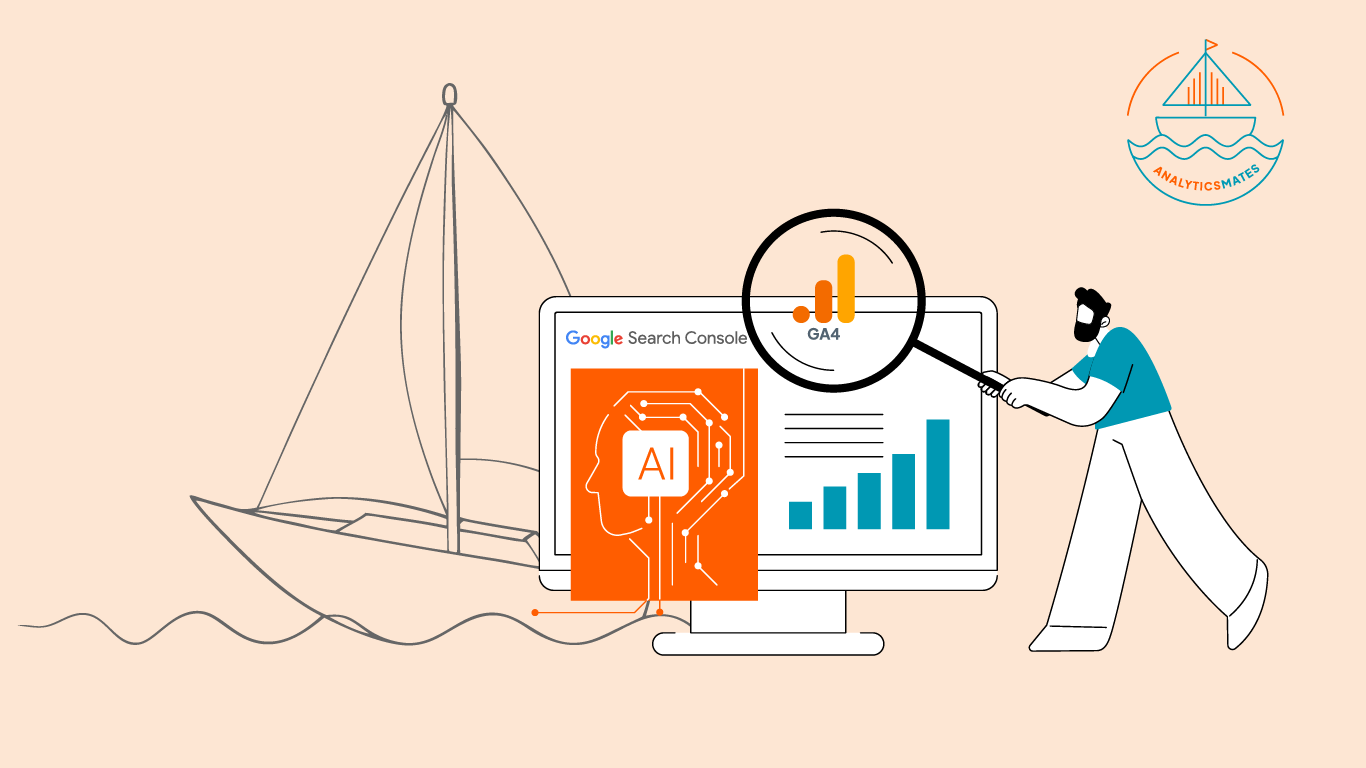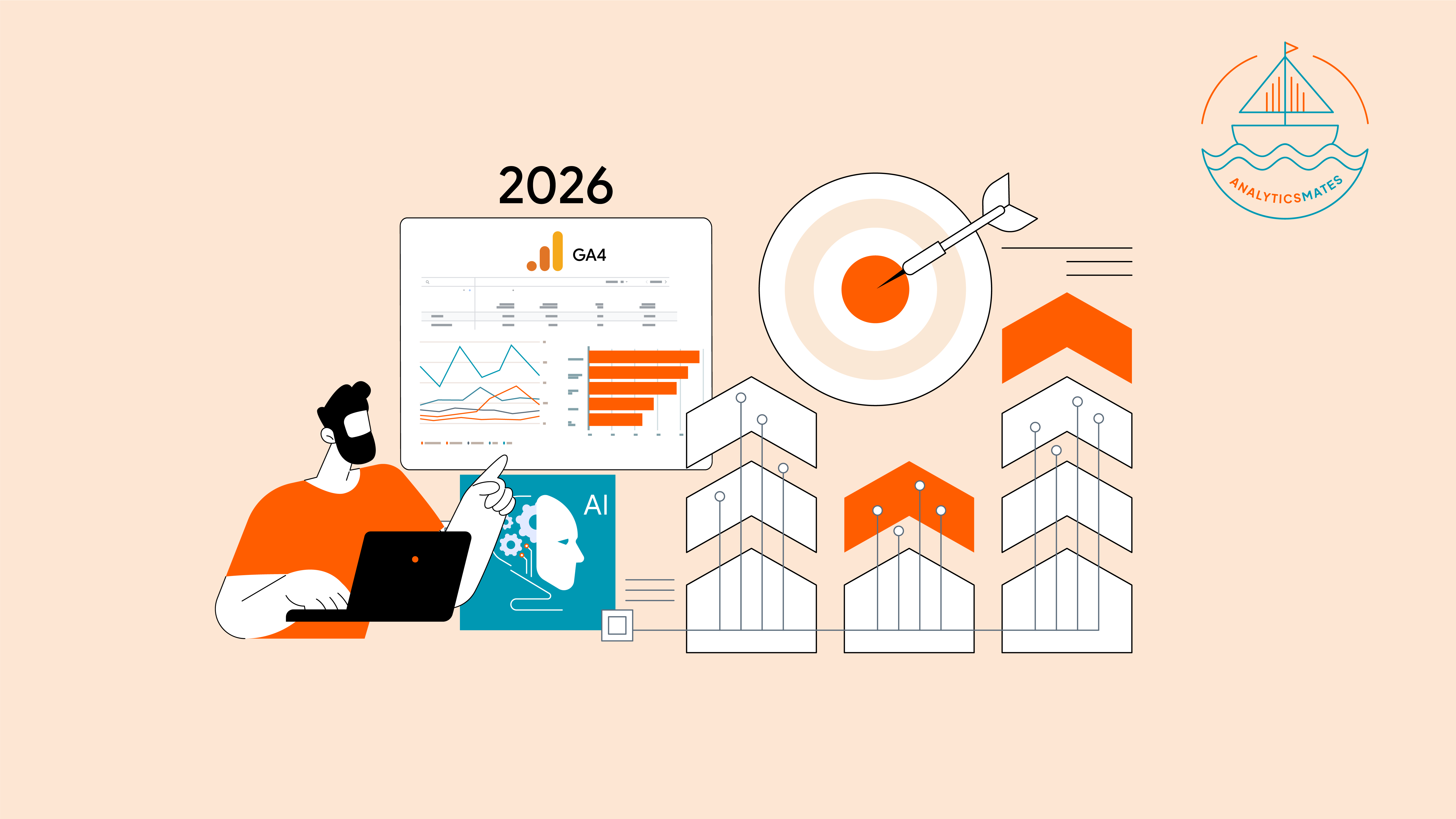Search is evolving and not in small ways. With Google’s AI Overviews and other generative features shaking things up, the usual SEO playbook isn’t hitting quite the same. Pages that once ranked steadily are now pushed further down the results page, and AI-generated summaries are claiming valuable screen space where your content used to show up. For businesses relying on organic traffic, this new feature brings disruptions which feel like a wave crashing against well-built strategies. If organic traffic is a key part of your business, it probably feels like all your hard work is getting pushed out of view.
But we’re not here to panic. We’re here to learn and adapt. Instead of pointing fingers and putting the blame on the algorithm, our team, the Analytics Mates team, went straight to the data countering the impact by starting digging into what’s changed, what’s working, and where the real opportunities are now. The outcome? A sharper, more intentional SEO strategy focused on what matters most: relevance, user intent, and high-quality content that actually earns its spot.
The AI Disruption in Organic Search

If you have been keeping an eye on Google lately, you have probably noticed search results looking a little different from before. Features like AI Overviews and the Search Generative Experience offers instant, AI-written summaries right on the search page, which is often the answer that you’re actually looking for. And so the tendency for users to no longer scroll down the search results or even click other websites for answers.
All of this feels like saving you more time. But for many users, especially businesses trying to boost their visibility, it’s a new challenge. If Google answers a question directly, what happens is, fewer people click through to the site where the information originally came from. And depending on how the algorithm works, Google’s AI overview still includes you in the summary, but without the actual visit, it’s impacting your overall search performance.
What this means in practice:
1) Users get an answer instantly by Google’s AI, and they never scroll further.
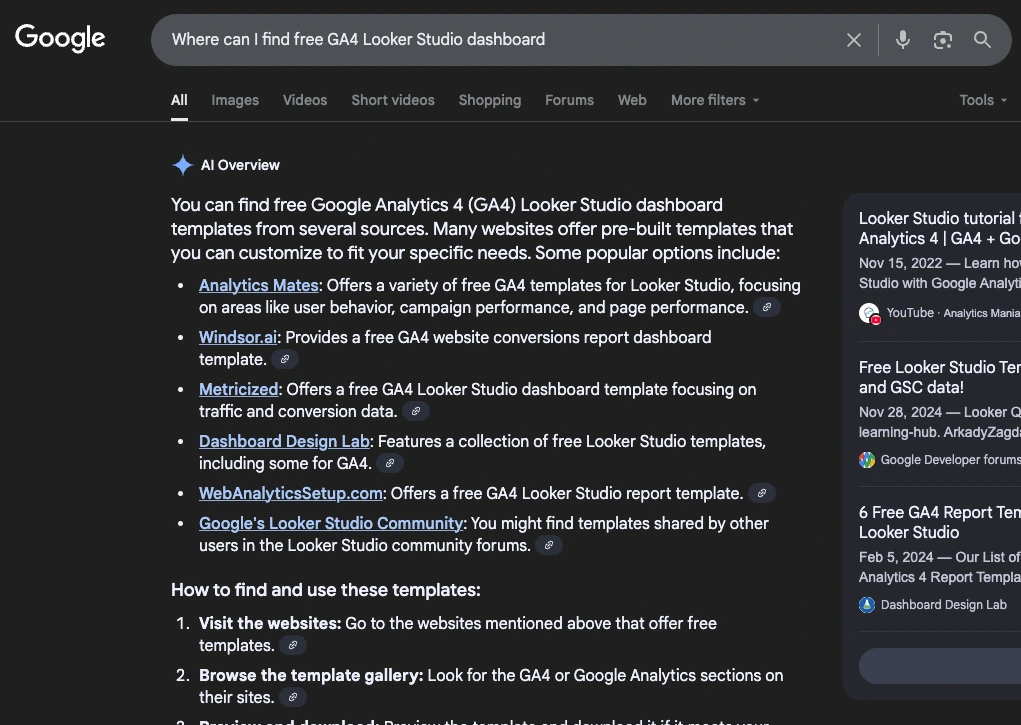
2) Site content or site link could still appear in the overview, but it is no longer the destination.
3) Featured snippets lose their spotlight, pushed down by the new AI summary block.
No official discussion about this within the Google community, but the ripple effects are real and this is actually happening. We’re already seeing traffic decline,also shifts in click-through rates, and once-reliable rankings becoming less secure. That said, our focus also shifts not only to showing up in search results, but also trying to adapt and ensure that we’re not totally dragged down by the AI Overview. In the next section we’ll talk about how the Analytics Mates figured out how to stay visible and valuable when Google itself is doing more of the talking.
Looking at our organic click data from late 2024, the drop was clear, and the trend had not slowed. We knew we could not reverse this entirely overnight, so we focused on thinking on strategy so we could stay competitive.

Our Response: A Data-Driven SEO Strategy
With all these new search changes happening, guessing is not an option. We started with the numbers, digging into GA4 and Google Search Console to understand exactly what was shifting.
1. We started working on extracting data and reviewing them to see where drops in impressions and clicks on pages which actually had been top performers previously had declined. These metrics gave us a clear picture of where things, especially visibility were slipping and which keywords were losing traction.
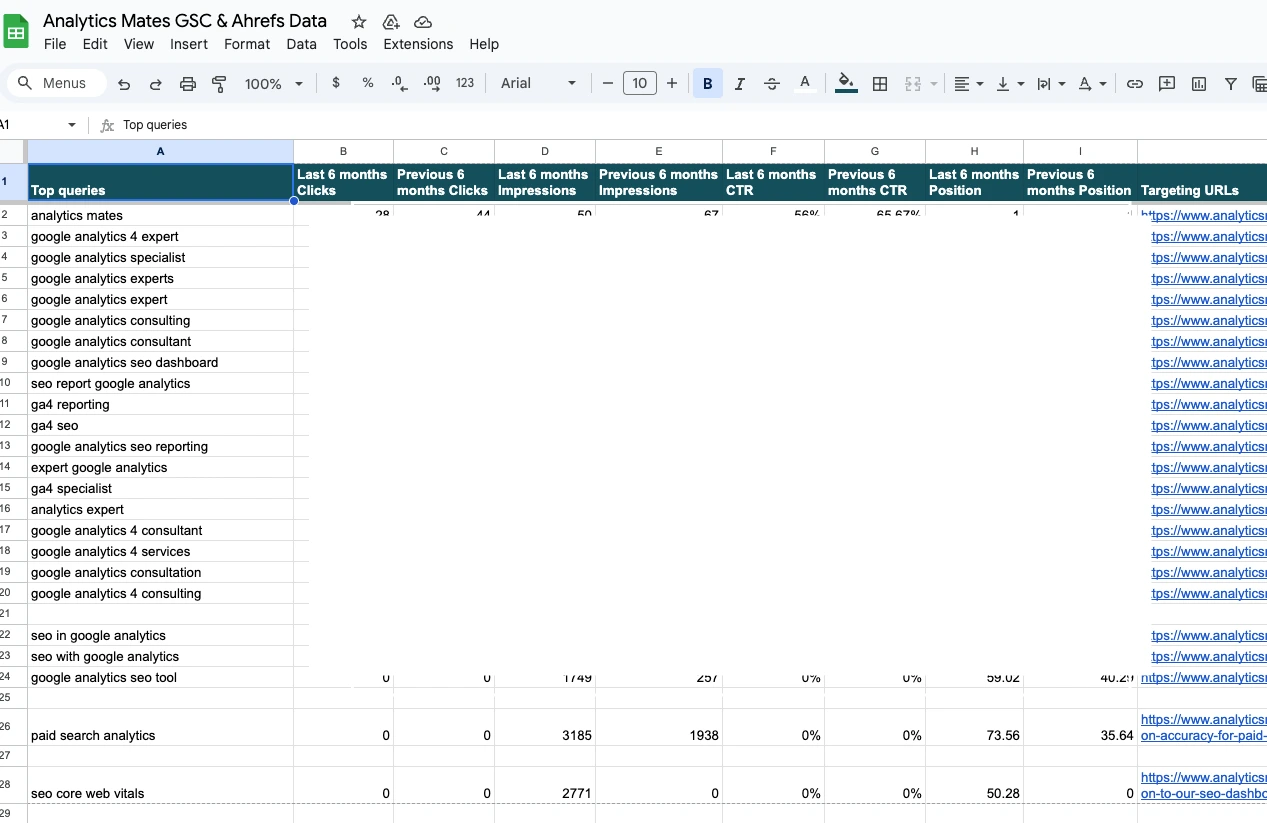
2. Next, we looked beyond rankings and traffic to understand how people were actually interacting with our content. We analyzed user behavior data like engagement rate, views and engaged sessions. This helped us see where intent might be changing and whether visitors were getting what they came for.

The first step is important, it sets the foundation for everything that follows and helps guide your next moves. The real goal here is to understand exactly what is causing the problem so you can fix it directly, what we don’t want to happen is to throw out random fixes and hoping one sticks.
If you want to learn more about how to collect the right SEO data from Google Search Console or your Google Analytics 4 property, and use AI to make your analysis better and sharper, check out some of our earlier blog posts:
- How AI and GA4 Can Supercharge Your SEO Content Strategy
- Smarter SEO with GA4 and AI: A Practical Guide for Marketers
After identifying where we could improve, we created an action plan.

These are some of the steps we implemented.
Optimizing Existing High-Value Pages
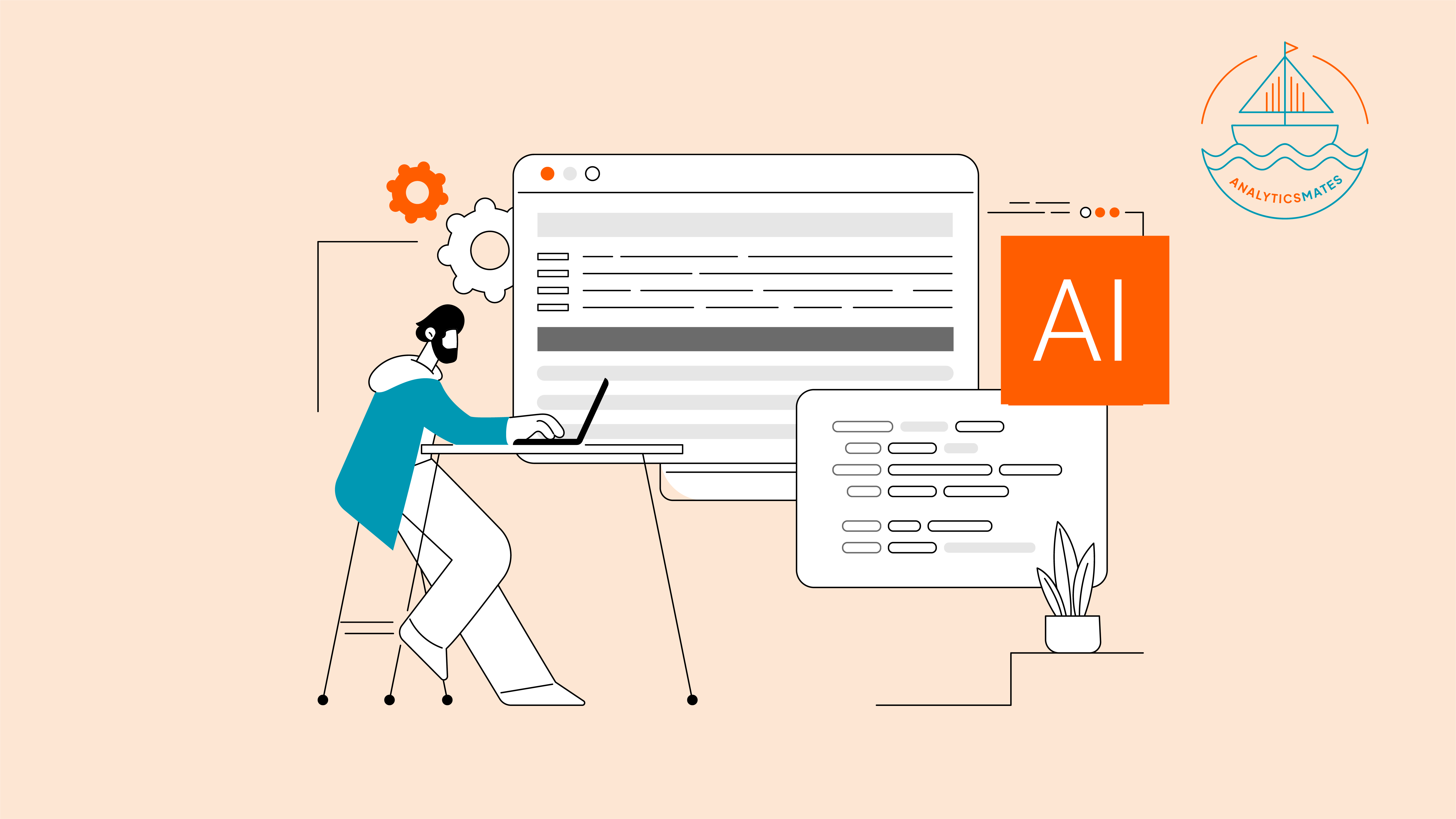
When we saw our organic clicks continuing to drop, we knew a surface-level fix would not cut it. Instead, we focused on a mix of technical improvements and on-page optimizations aimed at protecting and rebuilding visibility.
Here is the process we followed:
1) Addressed underperforming pages We reviewed pages that had lost organic traffic and implemented targeted fixes from our SEO audit, including updating duplicate meta descriptions and adding missing meta description tags.
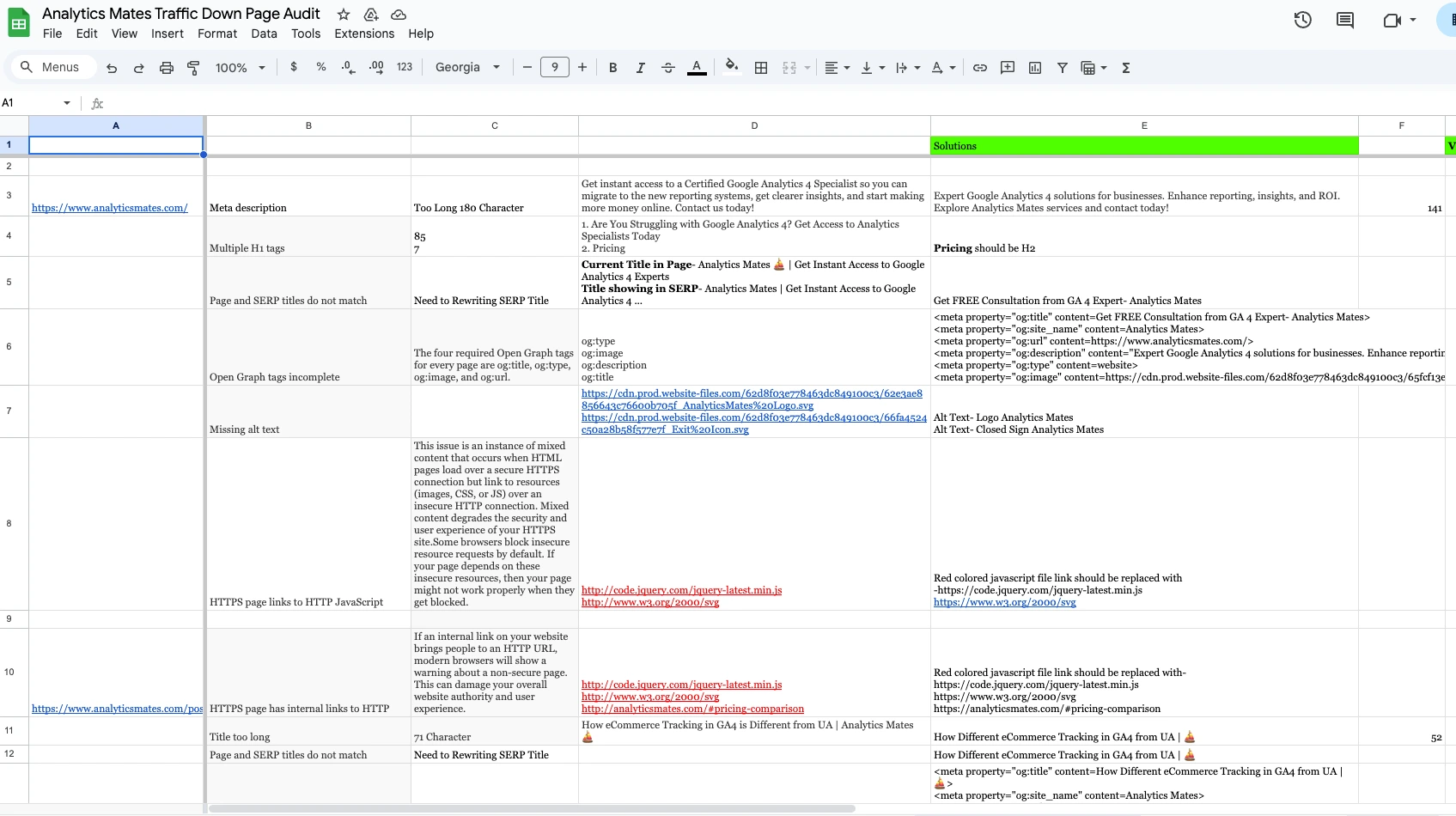
2) Enhanced technical SEO and site performance Part of the effort that we did was to optimize slow-loading pages by compressing and resizing images, converting them to WebP format, and optimizing CSS and JavaScript files. This helped scaling down load times and improve user experience.

3) Completed key metadata updates
We resolved Open Graph tag issues by setting clear and consistent titles, descriptions, and images for better social sharing previews.
4) Cleaned up broken and incomplete elements
This was one of the most important fixes we implemented, that is, fixing incomplete tags, removing redundant errors flagged in our SEO tools, and also ensured all key pages had complete metadata.
But it didn’t end there, you have to learn that these changes are not one-off tasks or projects, but should be part of your ongoing process of monitoring, testing, and improving. With collaboration with our team members, we work together and combine technical fixes with strategic content updates (which we’ll discuss next) and we think that helps position our site to adapt to the search environment changes .
Creating Smarter Content with Clear Guidelines
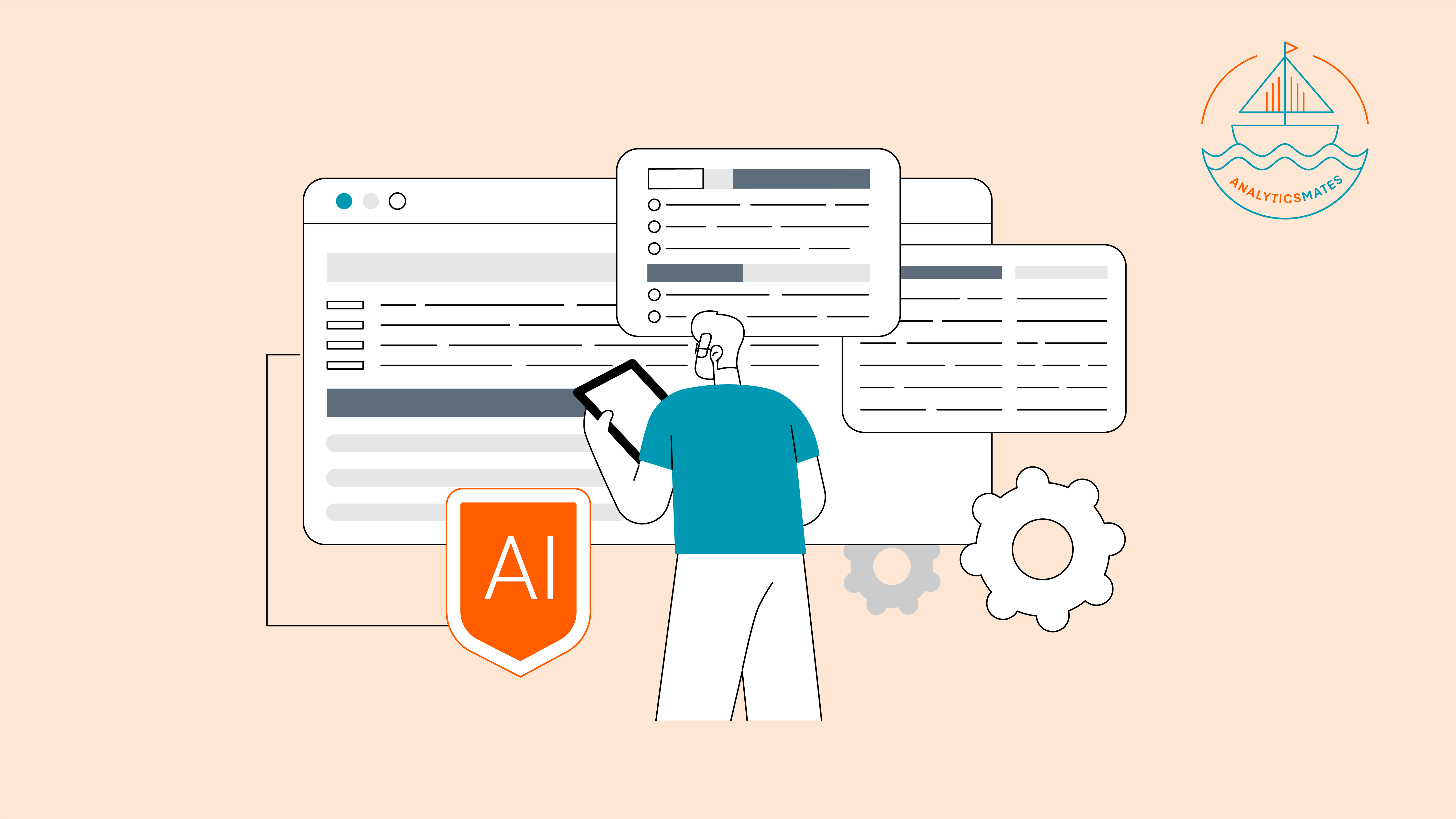
Publishing content for the sake of filling a calendar is no longer enough. In today’s search environment, every new piece needs a clear purpose and a direct connection to what your audience is looking for. That is why we created a set of content guidelines designed to make every post count.
Here is how we approach it:
1) Start with deeper search intentWe think of topics that’s not only trending , but we also consider mapping it to the specific search intent. Are readers/audiences looking for a quick answer, or maybe a detailed guide, or a step-by-step solution? Understanding what you’re writing and why you are writing it is important,this helps you outline everything from the structure to the tone.
2) Write for humans first, optimize for search secondOur rule of thumb is simple: make sure the piece is engaging and valuable to a real person before thinking about keywords or SEO tweaks. This should be how you’re thinking too, make it more human and sound like AI-written content. Remember, marking it more natural tends to perform better over time.
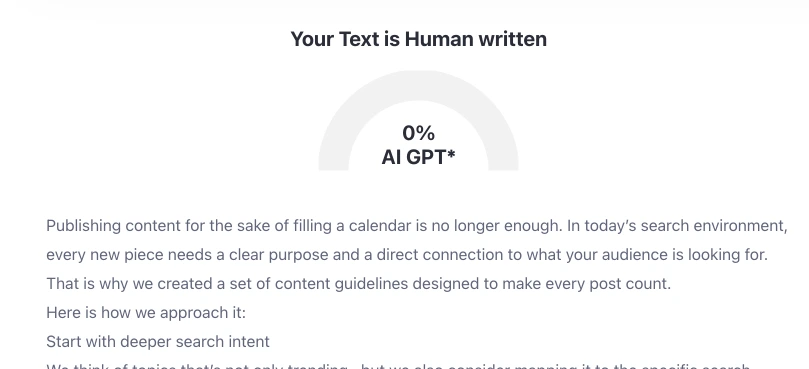
3) Assess before hitting publish
Before publishing, we ask: is this solving a real problem? Does it answer a specific question? Is it adding real value to the conversation? If not, we continue to edit and add more value to it before it’s published.
All of these helps us ensure that we are not just adding more content to the internet, but creating content/resources that are actually useful, trustworthy, and aligned with what people actually want to find if they need help.
Continuous Auditing and Monitoring
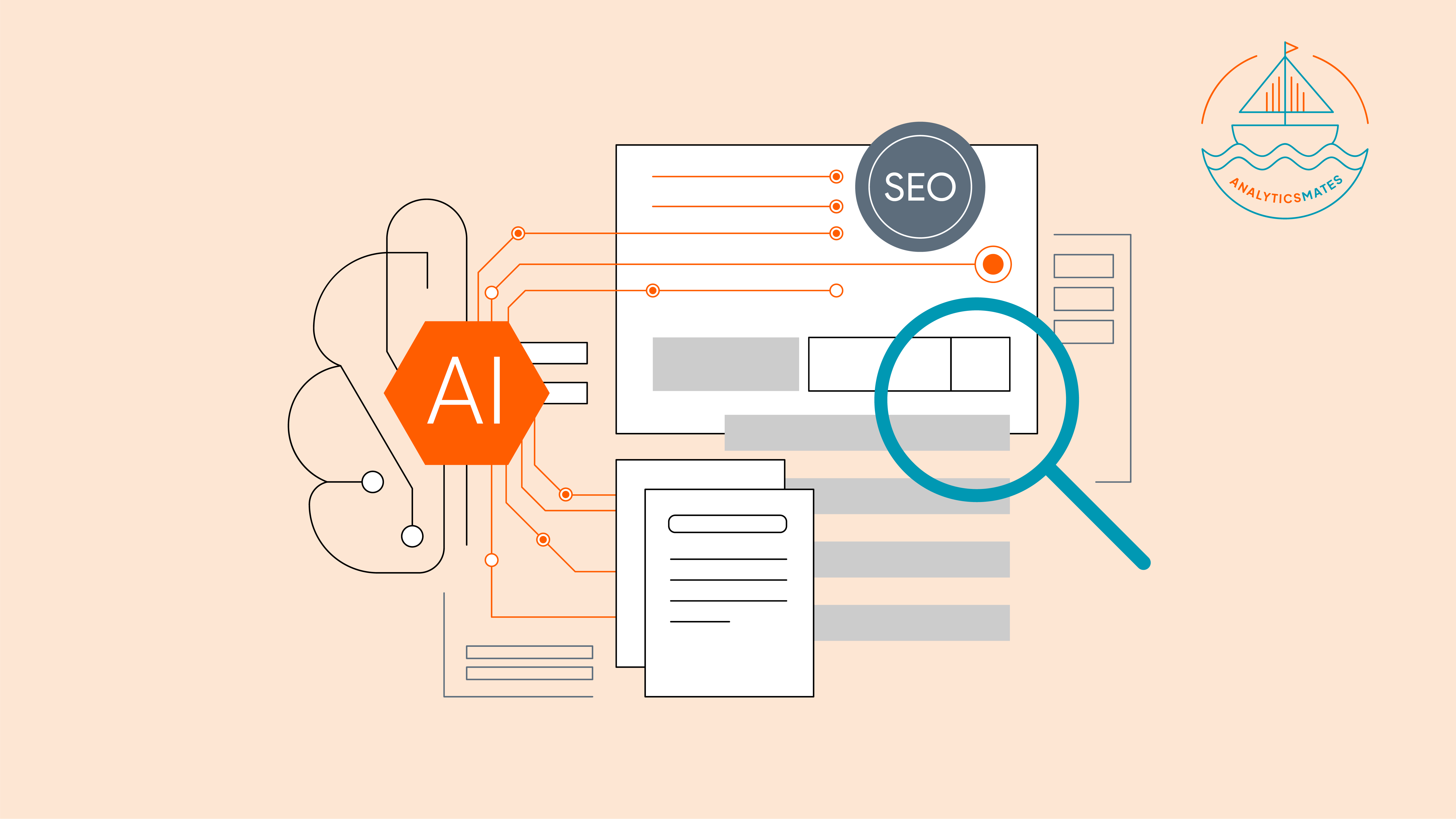
Here is how we keep our SEO performance in check:
1) Run monthly site audits
We set schedules and review our site’s crawlability, identify indexing issues, and flag outdated content that needs to be refreshed or removed. This helps ensure that search engines can access and understand our pages easily.2) Track keyword performance weeklyMonitoring keyword performance each week allows us to identify early warning signs of algorithm changes or AI-generated summaries pushing our rankings down. This is just one way of doing it, and by catching these shifts early, we can adjust our strategy before the impact grows.
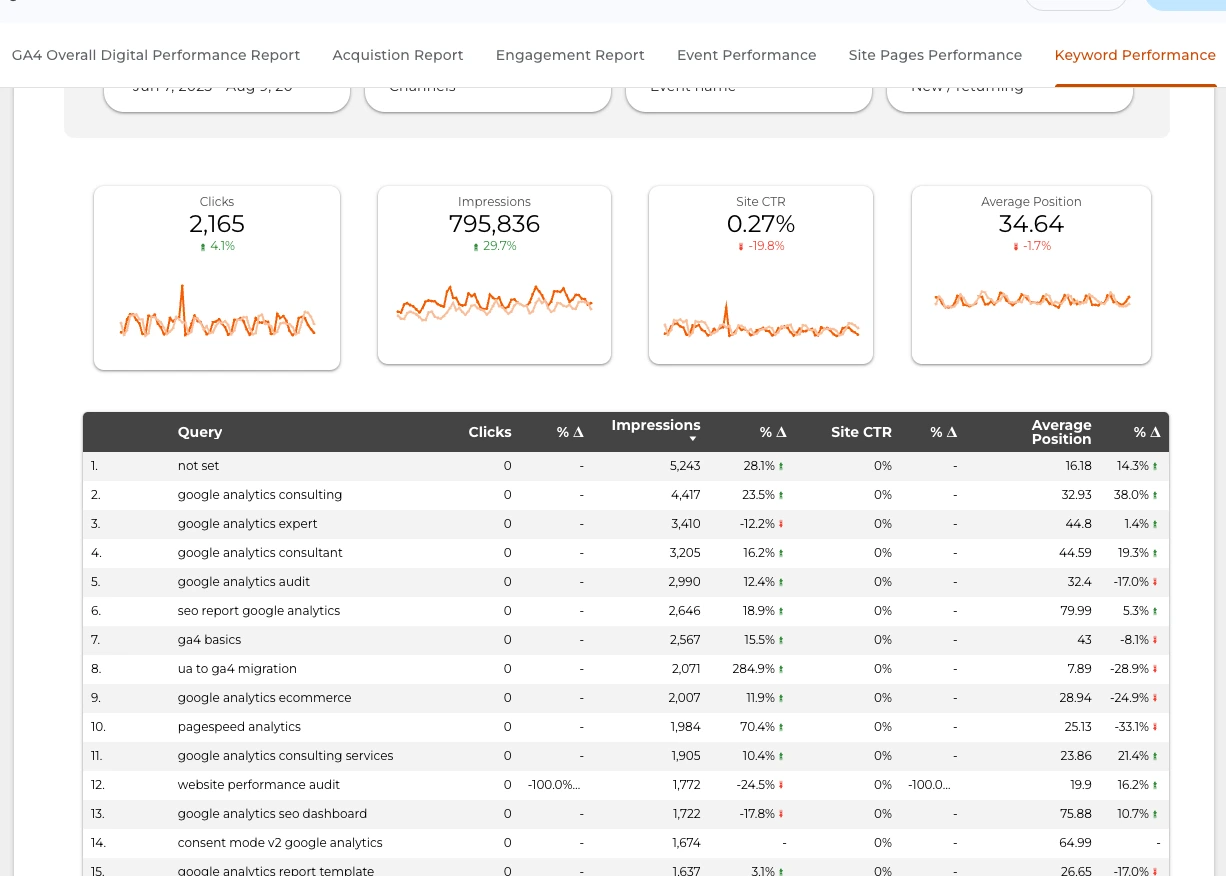
3) Watch for emerging trends and AI data sources
This might be the one that will often get ignored. Part of our action item is to actively monitor new search queries and keep track of where AI summaries are pulling their information from. This helps us adjust content and also targeting so our content remains relatable and meaningful.
Make auditing and monitoring a regular habit, so just like us, you can also respond quickly to changes, keep our content in top shape, and maintain visibility even as the search landscape evolves.
Final Thoughts: Adjusting with Purpose
Search is shifting really fast, and while users get really frustrated, we choose a different approach. Our team did not dwell on what has shifted but to move forward with intention. This AI Overview change is affecting how users find and interact with information online, and our team is always ready and determined to change alongside them.
Our team’s goal is to always stay flexible, making decisions based on real data, and also keeping quality at the center of everything we publish. By doing this, we are not just adapting with the changes. We are also building an SEO strategy that can get through innovations and user behavior in the long run.
It comes down to this: the landscape will always change. The question is whether we change with it. For us, the answer is clear. The outcome may not be exactly what you expect, but we took action, and here is our data after making adjustments and adapting to the changes.

FAQs
How can I tell if AI Overviews are affecting my SEO performance?
A: Monitor sudden drops in impressions and clicks in Search Console, especially on pages that previously ranked well.
Are featured snippets still worth optimizing for with AI Overviews in play?
A: Yes—AI summaries often pull from well-optimized featured snippets, so it's still a valuable tactic.specially on pages that previously ranked well.
What types of keywords are less affected by AI Overviews?
A: Long-tail and niche keywords that require detailed human context tend to be less disrupted.
Should I update or delete underperforming content after AI updates?
A: Start by updating—only remove content that’s outdated, off-brand, or offers no unique value.
Is it still worth investing in SEO when AI is changing search so much?
A: Absolutely. SEO is evolving—not disappearing. The fundamentals still matter; you just have to adapt your playbook.
Can schema markup help my content appear in AI Overviews?
A: While not guaranteed, structured data helps search engines better understand and possibly surface your content.
What tools should I use to monitor AI-driven search changes?
A: Combine GA4, GSC, and keyword tracking tools like Ahrefs or Semrush. Pay attention to SERP changes and AI summary rollouts.
How do I measure the success of SEO efforts now that clicks are harder to get?
A: Look at broader metrics: engagement, time on site, conversions—not just raw traffic.
Should I change my content format to compete with AI summaries?
A: Yes, consider using more scannable formats: FAQs, step-by-steps, and expert commentary work well.
How often should I audit my site now?
A: Monthly checks for top pages, and quarterly deep audits for everything else, are a solid baseline in today’s landscape.
Thank you for reading!
We're always looking for ways to improve our Google Analytics 4 blog content. Please share your feedback so we can make it even better.
See Article Images




